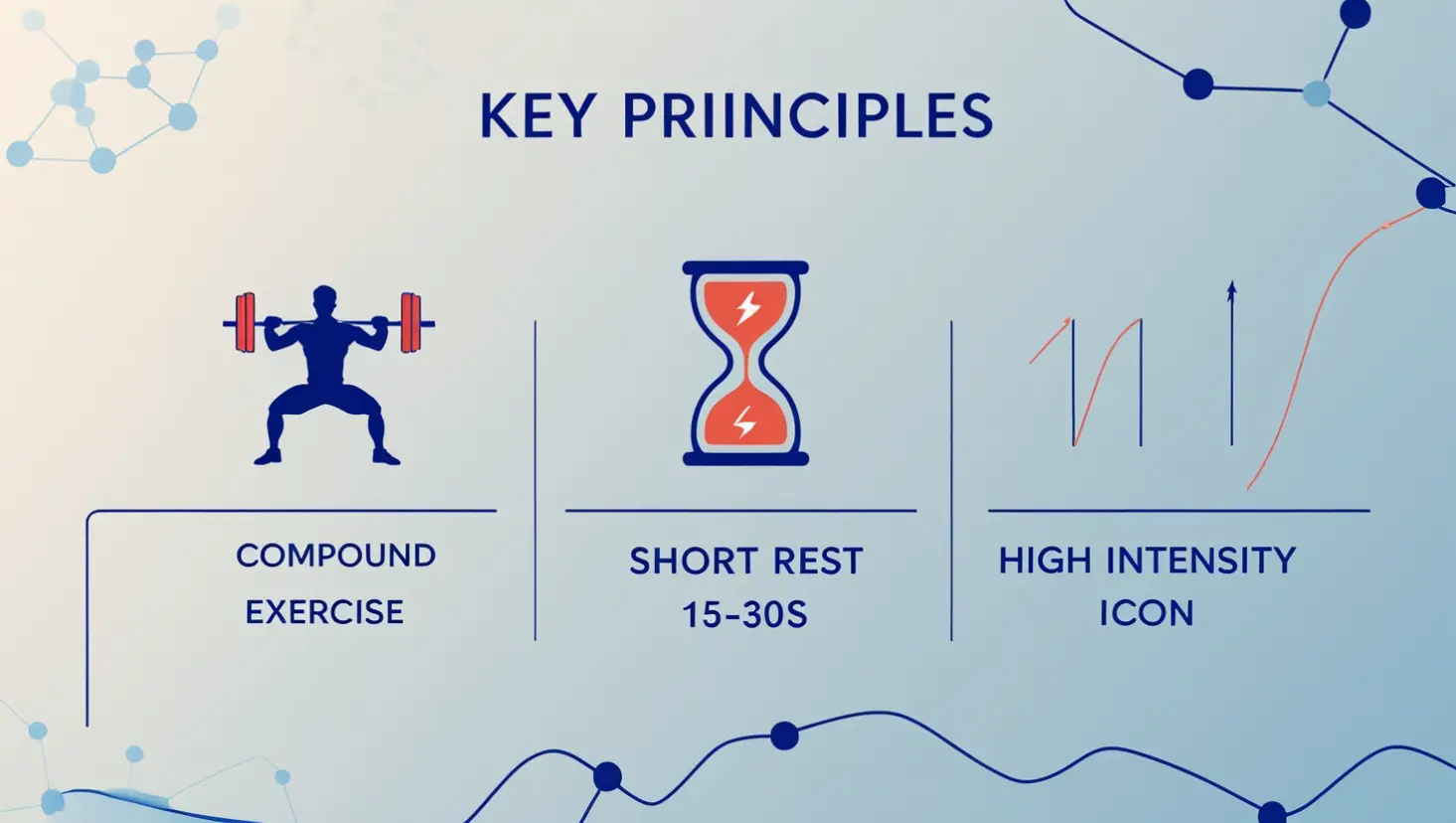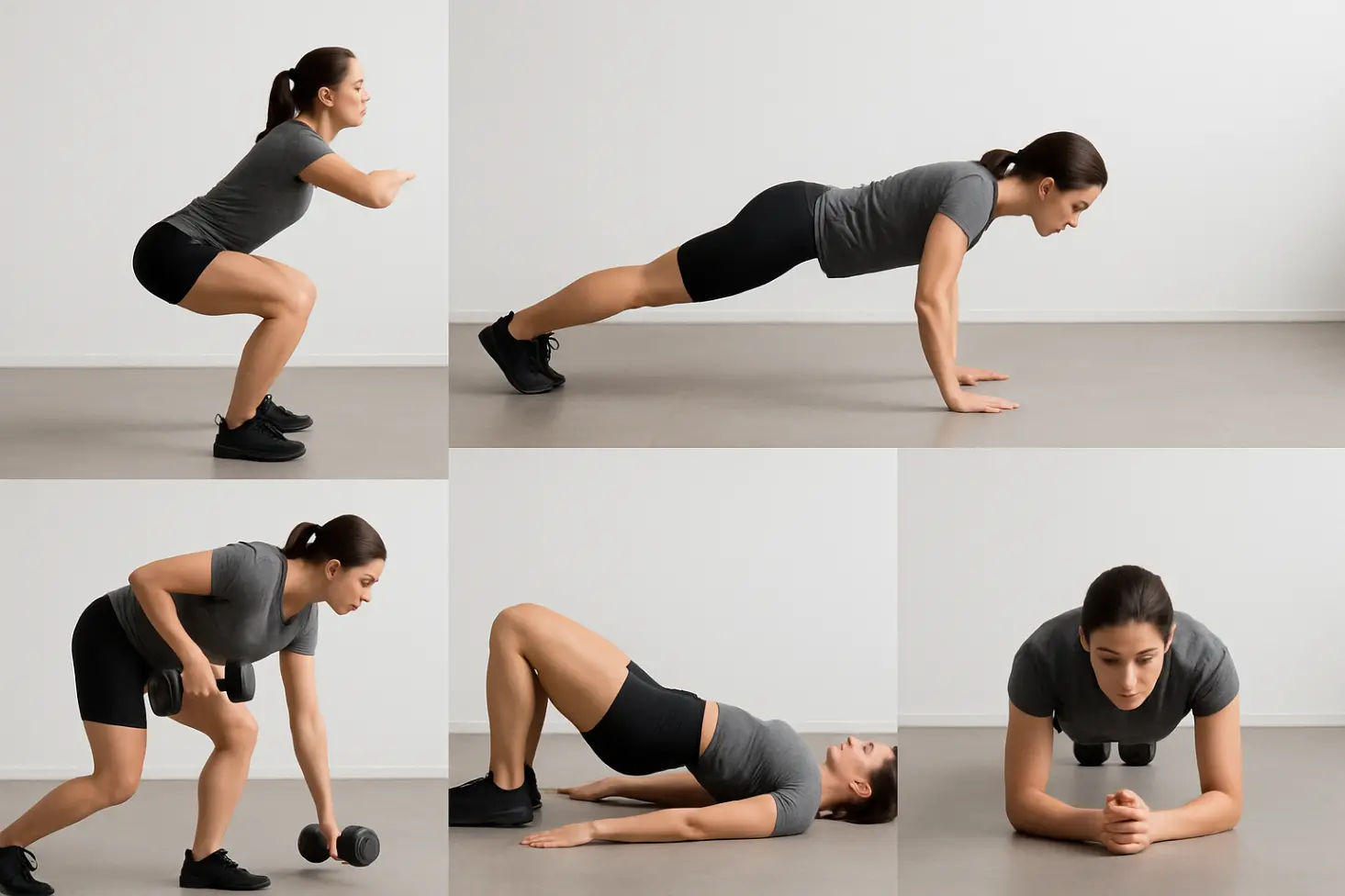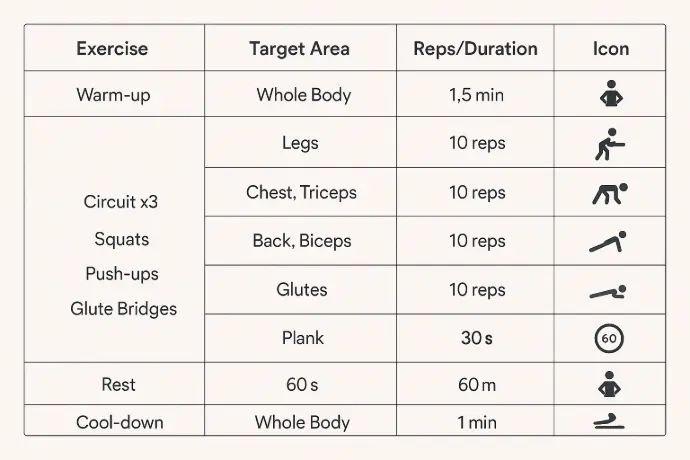The 15-Minute Full Body Workout: Your Secret Weapon for Real Fitness in a Time Crunch
Let’s be brutally honest: finding time for fitness often feels like squeezing water from a stone. Between work, family, chores, and that elusive concept called "downtime," the idea of spending an hour or more at the gym can be laughably unrealistic. That’s where the magic of the 15-minute full-body workout comes in. Forget the notion that short workouts are ineffective. When designed smartly, these micro-sessions can be your passport to significant strength gains, improved cardiovascular health, and sustainable fitness – even on your busiest days.
Why 15 Minutes? It's Science, Not Just Convenience
We’ve all heard the outdated guideline of "60 minutes a day." But research consistently shows that intensity and consistency often trump sheer duration, especially for general health and fitness. The American College of Sports Medicine (ACSM) emphasizes that accumulating physical activity in shorter bouts throughout the day can be just as beneficial as one continuous session for many health outcomes.
Here’s the key insight: Density. A 15-minute full-body workout forces you to maximize every second. It leverages:
Compound Movements: Exercises that work multiple major muscle groups simultaneously (think squats, push-ups, rows). One move, maximum muscle recruitment. As Dr. Len Kravitz, renowned exercise physiologist, notes, "Compound exercises are the cornerstone of time-efficient training... they elicit a greater metabolic demand."
Minimal Rest: Rest periods are drastically shortened (think 15-45 seconds between sets or exercises), keeping your heart rate elevated and turning the session into a potent hybrid of strength and cardiovascular training.
High Intensity: You work hard during those active periods. No leisurely strolls between machines.

Studies like the famous Tabata protocol (20 seconds all-out effort, 10 seconds rest x 8 rounds = 4 minutes!) demonstrated significant aerobic and anaerobic improvements in extremely short durations. While we're not advocating all-out sprints every time, the principle applies: focused, intense effort in a condensed timeframe works.
The Blueprint: Crafting Your Effective 15-Minute Power Session
Not all 15-minute workouts are created equal. Haphazardly doing a few random exercises won't cut it. Here’s the expert framework:
Warm-up (1-2 Minutes): NON-NEGOTIABLE, even short. Get blood flowing dynamically.
Examples: 30 seconds of jumping jacks, 30 seconds of arm circles (forward/backward), 30 seconds of bodyweight squats, 30 seconds of cat-cow stretches. Goal: Raise core temperature, lubricate joints.
The Workout (12-13 Minutes): The core. Structure is crucial:
Strategy 1: Circuit Training (Most Common & Efficient): Perform 4-6 exercises back-to-back targeting different movement patterns with minimal rest (15-30 sec) between exercises. Rest 60-90 seconds after completing the full circuit. Repeat the circuit 2-4 times.
Strategy 2: Density Training (Time-Based Sets): Set a timer for 12 minutes. Choose 3-4 exercises. Perform as many rounds as possible (AMRAP) of a set sequence (e.g., 10 squats, 8 push-ups, 6 rows). Rest only as needed, but push for minimal breaks.
Strategy 3: EMOM (Every Minute on the Minute): Set a timer for 12-15 minutes. At the start of every minute, perform a prescribed number of reps for a specific exercise. The remaining time in that minute is your rest. Repeat with the same or different exercises each minute. (e.g., Min 1: 12 Squats, Min 2: 10 Push-ups, Min 3: 8 Rows, Min 4: 20s Plank... repeat).
Cool-down (1 Minute): Gentle movement to lower heart rate.
Examples: Slow marching in place, deep breathing, gentle hamstring/quad stretches (hold each for 15-20 seconds).
The Exercise Arsenal: Choosing Your Weapons Wisely
Select exercises that deliver maximum bang for your buck. Prioritize compound movements covering these essential patterns:
Lower Body Push (Quads, Glutes): Squats (bodyweight, goblet, dumbbell), Lunges (forward, reverse, walking), Step-ups.
Upper Body Push (Chest, Shoulders, Triceps): Push-ups (standard, incline, kneeling), Dumbbell Shoulder Press.
Upper Body Pull (Back, Biceps): Bent-Over Dumbbell Rows, Inverted Rows (using a sturdy table or Smith machine), Resistance Band Rows.
Hip Hinge (Hamstrings, Glutes, Lower Back): Kettlebell/Dumbbell Swings, Romanian Deadlifts (RDLs - light weight, perfect form is key!), Glute Bridges.
Core: Planks (standard, side), Bird-Dog, Dead Bug. Note: Crunches are less time-efficient; planks engage more muscles simultaneously.

Sample 15-Minute Full Body Workout (Circuit Style - Beginner/Intermediate)
Warm-up (1.5 min): Jumping Jacks (30s), Arm Circles (15s fwd/15s bwd), Bodyweight Squats (30s).
Circuit (Repeat 3 times):
Exercise 1: Bodyweight Squats (12-15 reps) [Lower Body Push]
Exercise 2: Push-ups (as many reps as possible with good form - knees or incline ok!) [Upper Body Push]
Exercise 3: Dumbbell Rows (10-12 reps per arm) [Upper Body Pull - grab water bottles or books if no weights!]
Exercise 4: Glute Bridges (15-20 reps) [Hip Hinge/Glute Focus]
Exercise 5: Plank (Hold for 30-45 seconds) [Core]
Rest: 60 seconds after completing all 5 exercises.
Cool-down (1 min): Slow March (30s), Standing Quad Stretch (15s per leg).

Pro Tips for Maximizing Your 15 Minutes:
Intensity is King: Push yourself during the work periods. The last few reps should feel challenging. If it's easy, increase reps, add weight, or slow down the movement (try a 3-second lowering phase).
Form Over Speed: Sacrificing form for speed or reps is a fast track to injury. Master the movement pattern first. Quality trumps quantity every time.
Minimize Transition Time: Set up your space before you start. Have weights nearby if using them. Move swiftly between exercises.
Consistency Beats Perfection: Doing a 15-minute workout 4-5 days a week is infinitely better than doing one "perfect" hour-long session and then nothing for two weeks. Make it a non-negotiable habit, like brushing your teeth.

Listen to Your Body: Some days you'll crush it, others you'll need to scale back. That's okay. Modify exercises, reduce reps, or take slightly longer rests if needed. The goal is to show up and move.
Progressive Overload: To keep improving, you need to gradually make the workout harder over weeks and months. Increase weight, reps, sets, reduce rest time, or choose more challenging exercise variations (e.g., standard push-ups instead of knee push-ups).
The Real-World Impact: More Than Just 15 Minutes
The beauty of this approach extends far beyond the clock:
Habit Formation: 15 minutes feels achievable, lowering the barrier to entry. Success breeds motivation. "I found that clients who started with short, consistent workouts were far more likely to stick with fitness long-term than those who aimed for daunting hour-long sessions from the start," shares Sarah Jones, a certified personal trainer with over a decade of experience.
Metabolic Boost: Intense, compound exercises create an "afterburn" effect (Excess Post-exercise Oxygen Consumption - EPOC), where your body continues to burn calories at a slightly elevated rate for hours after the workout.
Stress Buster: A potent, quick workout is a fantastic way to blast away stress hormones and boost mood-enhancing endorphins in the middle of a hectic day.
Foundation for More: Consistently nailing your 15-minute sessions builds discipline and fitness. When you do have more time, you'll be primed to tackle longer or more specialized workouts effectively.

Conclusion: Your Fitness, On Your Terms
The 15-minute full-body workout isn't a compromise; it's a highly strategic and effective approach to fitness in the modern world. It shatters the excuse of "no time" and empowers you to take control of your health in manageable, sustainable chunks. By focusing on compound movements, minimizing rest, and bringing intensity, you can build strength, improve cardiovascular health, boost metabolism, and enhance your mood – all in less time than it takes to scroll through social media.
Stop waiting for the mythical "free hour." Grab some space, pick your exercises, set a timer for 15 minutes, and move with purpose. Your body – and your future self – will thank you for it. Consistency with these powerful micro-workouts will yield results far greater than you might imagine possible in just a quarter of an hour. It’s not about finding time; it’s about making your time count. Now go get it done!